The M12 connector has seen a number of IEC standards developed around it to ensure that protected connections can be made in a widening range of applications. Originally used by the automotive industry, expansion into other industries has seen more ‘codings’ and configurations developed to meet the growing demands on signal, power and data connections.
The M12 connector’s construction make them ideal for use in industrial environments, with robots and have features that reduce set-up and maintenance time. Our buyers guide will help you to determine what M12 cordsets would best suit your requirements.
Choosing the correct coding
- Are you aware of the colour coding used by manufacturers?
- What are your requirements for signal, power and data connections?
The first thing to do when selecting the right M12 cable is to make sure that the coding meets your specific needs. The M12 connector is available in a wide variety of coding options that help to minimise errors, and many manufacturers apply colour coding to the inner contact of the connector and the cable itself. This allows users to differentiate between the different types available.
A, B, D and X-coded connectors are by far the most common due to how long they have been available. A, B and D-coded cables are among the original M12 connector types, while X-coded cables have become more popular due to the need for high-speed industrial Ethernet. They will likely replace the A and D-coded part for Ethernet applications.
It should always be noted that the indicated current and voltage ratings listed are for guidance only, and users are always advised to check information against the manufacturer’s datasheet.
| A-Coded Power: Data 2 to 17 poles Primarily used with sensors and actuators, and common for DeviceNet, IO Link and Profibus. | 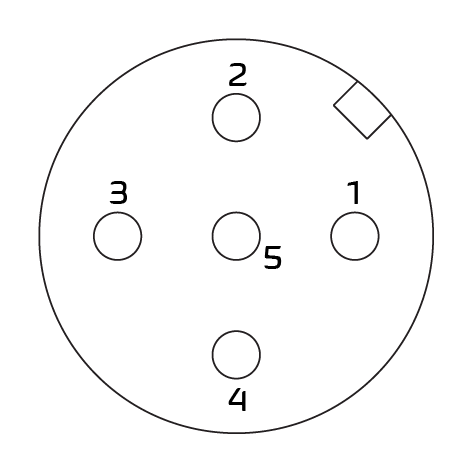 |
| B-Coded Power: Data 5 poles The flip-side of A-Coded connectors, B-Coding is used for DeviceNet, Profibus and Interbus systems. | 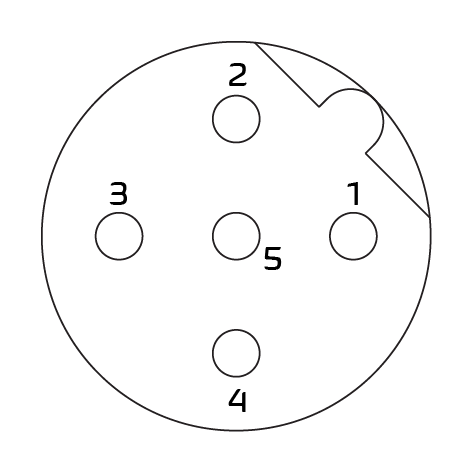 |
| C-Coded Power: AC 3 to 6 poles Dual keyway coding primarily used with AC sensors and actuators. These will eventually be replaced by S-Coded connectors (see below). | 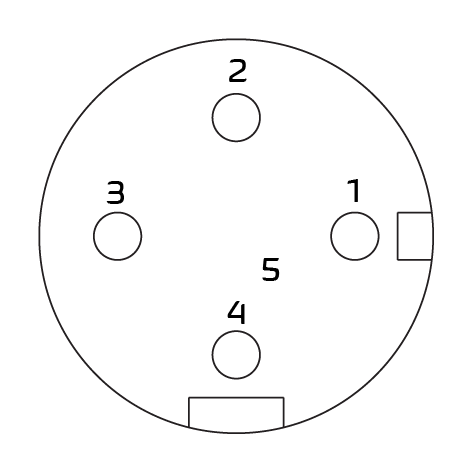 |
| D-Coded Power: Data 3 to 5 poles Good choice for industrial Ethernet, Profinet, Ethernet/IP and EtherCat. | 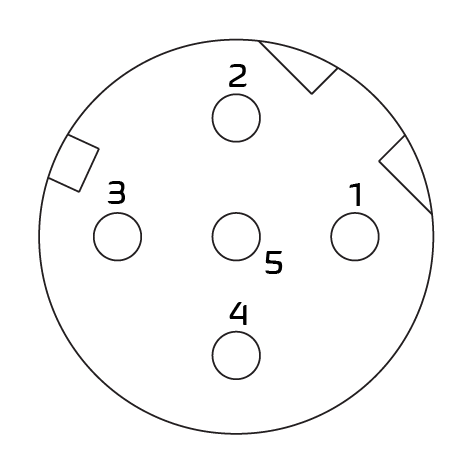 |
| K-Coded Power: AC 4 poles plus PE (protective earthing) Using a conductor to ensure the exposed conductive surface is close to earth potential, this coding has a power transmission of 630V at 16A. | 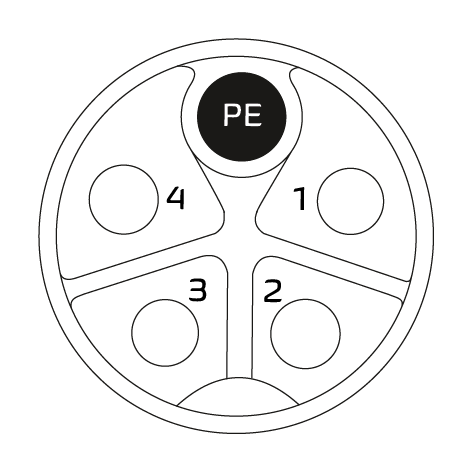 |
| L-Coded Power: DC 4 poles plus FE (functional earthing) For robust power transmission up to 63V and 12A or 16A, with or without functional earthing. | 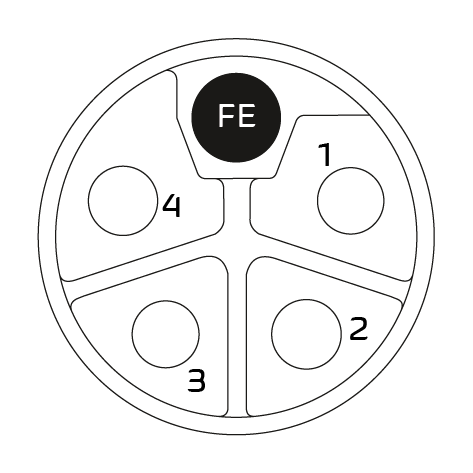 |
| M-Coded Power: AC 5 poles plus PE Offering 630V at 8A and two additional pins for signal. | 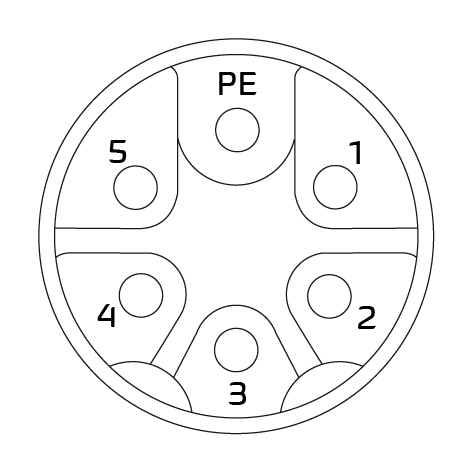 |
| P-Coded Power: Data 4 poles plus PE Offers various functions but is typically used for EtherCAT. | 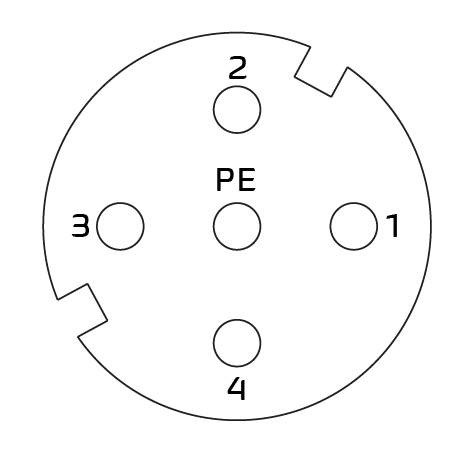 |
| S-Coded Power: AC 3 poles plus PE or 2 Poles plus PE Used for motor, frequency-converters and motor-operated switches. AC power with voltage ratings of 230V or 630V and current ratings of 12 to 16A (depending on the manufacturer). | 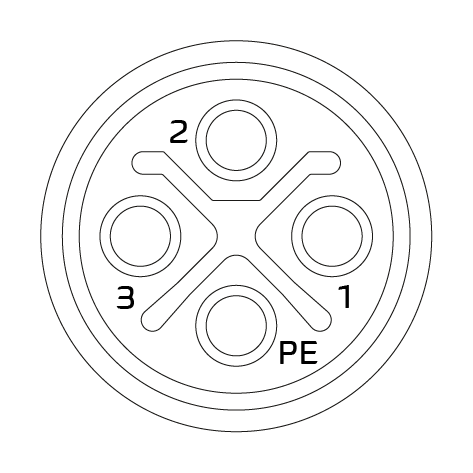 |
| T-Coded Power: DC 4 poles For Fieldbus comp, passive distribution boxes, motors, and PSUs for Power. DC powered rated at up to 63V and 12 or 16A (depending on the manufacturer). | 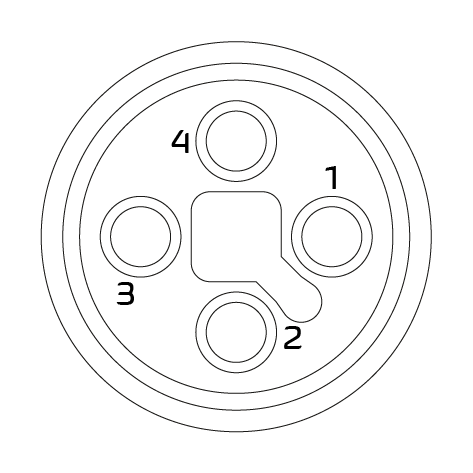 |
| X-Coded Power: Data 8 poles Used in the case of rugged industrial Ethernet applications with speeds of 10GB. | 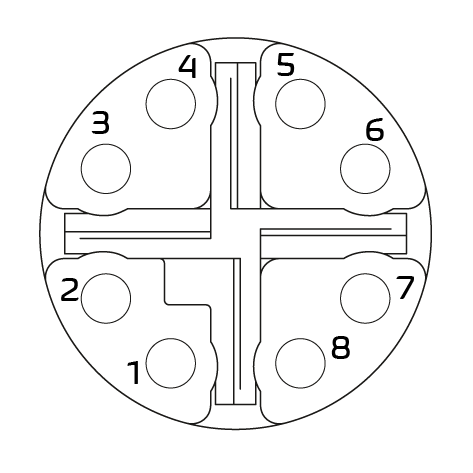 |
| Y-Coded Power: Hybrid 8 poles Offers CAT5e data at speeds of up to 100Mbps, and power of up to 30V at 6A | 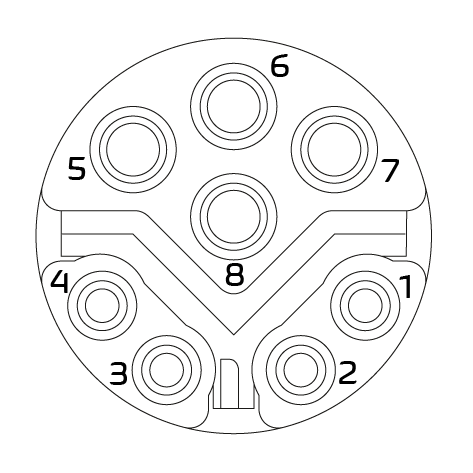 |
Choosing connector configurations
The most common form of M12 cables are A-coded, 4-pin straight connectors with a screw lock. However, users may need to look at higher pin numbers that include protective earthing or data transmission capability, as well as different locking methods.
When the correct coding is selected,, the next thing to consider is the configurations of the connector, including pins and lock types. You can choose from 2, 3, 4, 5, 8 and up to 17-pin versions, and connectors can be straight or angled depending on preference or need. While the specifics vary by manufacturer, this overview should help in choosing the correct cable type.

Technology: Bayonet Lock
Trade Name: sSmartClick

Technology: Bayonet Lock
Trade Name: SPEEDCON

Technology: Screw Lock
Trade Name: M12 Circular Connectors

Technology: Screw Lock
Trade Name: Circular Connectors

Technology: Single Keyway
Trade Name: Micro-Change

Technology: Screw Lock/Push-Pull Lock
Technology: Screw Lock/Push-Pull Lock

Technology: Screw Lock
Trade Name: harax

Technology: Screw Lock
Trade Name: Circular Connectors
Choosing the right cordset
- What torsional angle and bending diameter is required?
- How many cycles per minute/hour/year is the cable exposed to?
- What is the maximum acceleration needed for the jacket material?
The final thing to consider is the cordset, which will ensure that the transmission of power, data and signal is protected and maintained within the cable’s environment. Key factors include dirt, dust and liquids, as well as chemicals, vibration, mechanical stress, torsion, bending, tension and compression.
Torsional flexibility is also an important attribute to consider, as having an accurate idea of the number of cycles the cable is exposed to will reveal the lifetime of the connector. For example, Torsion Cable (class 6) construction as standard is usually formed of a copper conductor with fine drawn strands and has a typical lifetime in the range of 5-10 mio cycles with a torsion angle +/- 360 degrees/m.
In addition, if a cordset and cable suitable for harsh or extreme conditions is used, the user will need to ensure that the connector is also designed to provide this same level of protection.
PVC Thermoplastic (TP)
IP Rating: IP65/IP67
The PVC Thermoplastic material is ideal for industrial control systems that are relatively clean and not exposed to extreme temperature variations. This makes it a good general purpose and economical option, with a variety of colours available.PUR Polyurethane
If there is a potential for exposure to natural elements, the PUR Polyurethane may be the best choice. The material allows for constant flexing and abrasions, and there are also halogen free options on the market.
Thermoplastic Elastomer (TPE)
A more heavy-duty material, Thermoplastic Elastomer is also resilient against natural elements and protects against chemicals and welding splatter. It has moderate stretch and flexing capabilities without damage, and is also resistant to oil and low temperatures.
Tray-rated Cables (PLTE/TC-ER)
Usually laid in series with other cables, tray-rated cables protect against natural elements, chemicals and welding splatter.
Shielding
If exposure to vibrations and extreme temperatures in harsh environments is possible, this material is recommended. It will also protect against oil and gas or drilling applications, and is effective against signal interference in high noise environments. This makes it ideal for sensor and data transfer.
Washdown Cordsets
Washdown cordsets are ideal for harsh environments such as those involving food and drink, and they are extremely resilient to chemical and cleaning agents. The material is also capable of withstanding extreme temperatures and pressure.
Torsion Cable (Class 6)
Used in industrial environments and often attached to moving robotic parts, machinery and power chains. Torsion cables are very flexible and offer a variety of protective sheathing variants to allow for application in an environment in which the cable needs to move around.










